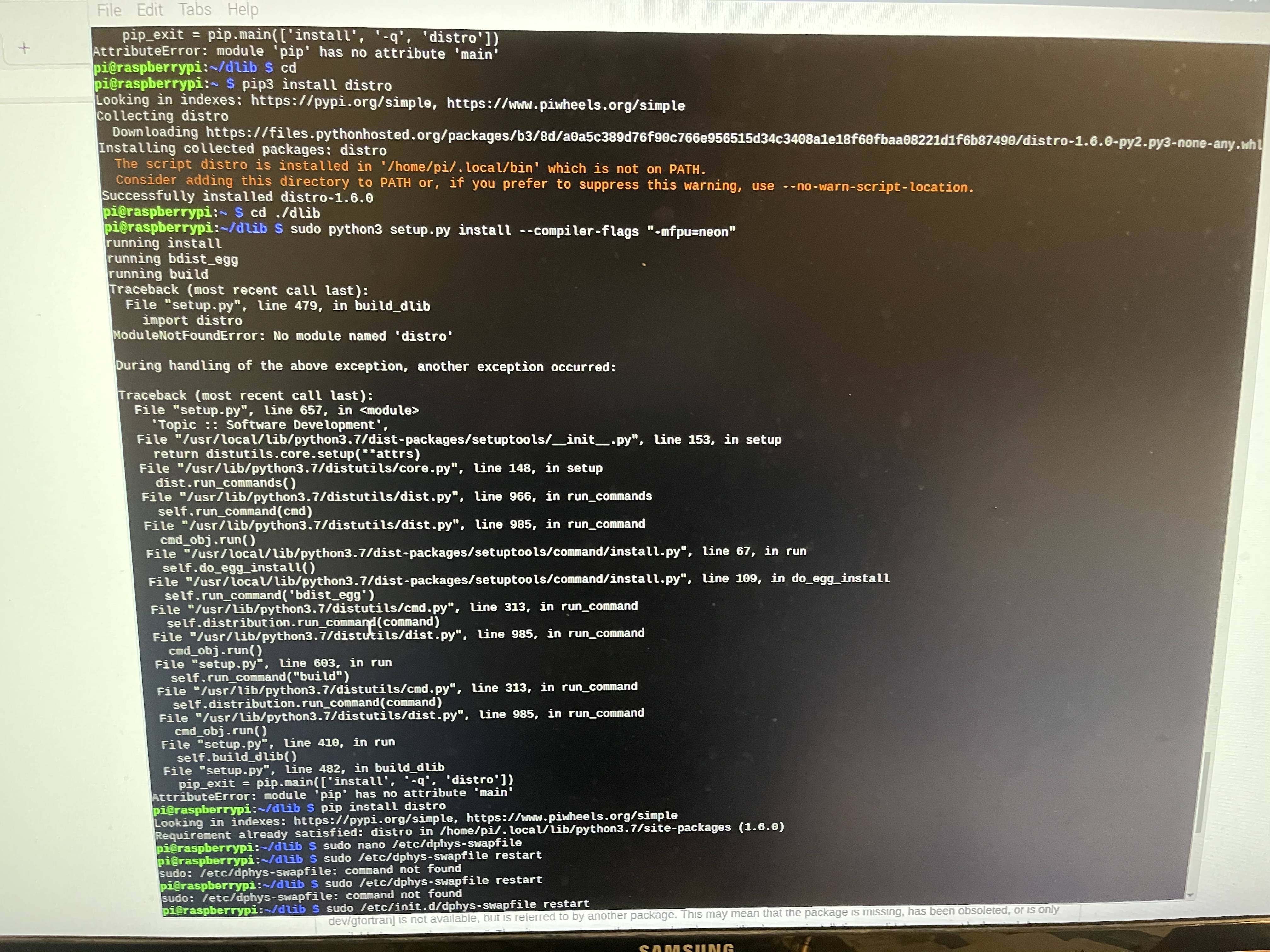Step 1: Install dependancies
sudo apt -y update && sudo apt -y full-upgrade
sudo apt install build-essential \
cmake \
gfortran \
git \
wget \
curl \
graphicsmagick \
libgraphicsmagick1-dev \
libatlas-base-dev \
libavcodec-dev \
libavformat-dev \
libboost-all-dev \
libgtk2.0-dev \
libjpeg-dev \
liblapack-dev \
libswscale-dev \
pkg-config \
python3-dev \
python3-numpy \
python3-pip \
zip \
python3-picamera
Step 2: Updates
sudo pip3 install --upgrade picamera[array]
Step 3: Increase the swap file size so we can build dlib
sudo nano /etc/dphys-swapfile
Find CONF_SWAPSIZE and change its value from 100 to 1024. Save
and exit then run this command:
sudo /etc/init.d/dphys-swapfile restart
Step 4: Build and install dlib
cd
git clone -b 'v19.6' --single-branch https://github.com/davisking/dlib.git
cd ./dlib
sudo python3 setup.py install --compiler-flags "-mfpu=neon"
This may take a significant time to run (Raspberry Pi 4 took about 30 minutes)
Step 5: Revert the swap size
sudo nano /etc/dphys-swapfile
Find CONF_SWAPSIZE and change its value from 1024 to 100. Save
and exit then run this command:
sudo /etc/init.d/dphys-swapfile restart
Step 6: Install face_recognition and examples
sudo pip3 install face_recognition
You're done!


Also stucked on step 4, says "no module named 'distro' in the error message when running "sudo python3 setup.py install..." line.
Tried to install distro package but still doesn't work.
Messing around right now